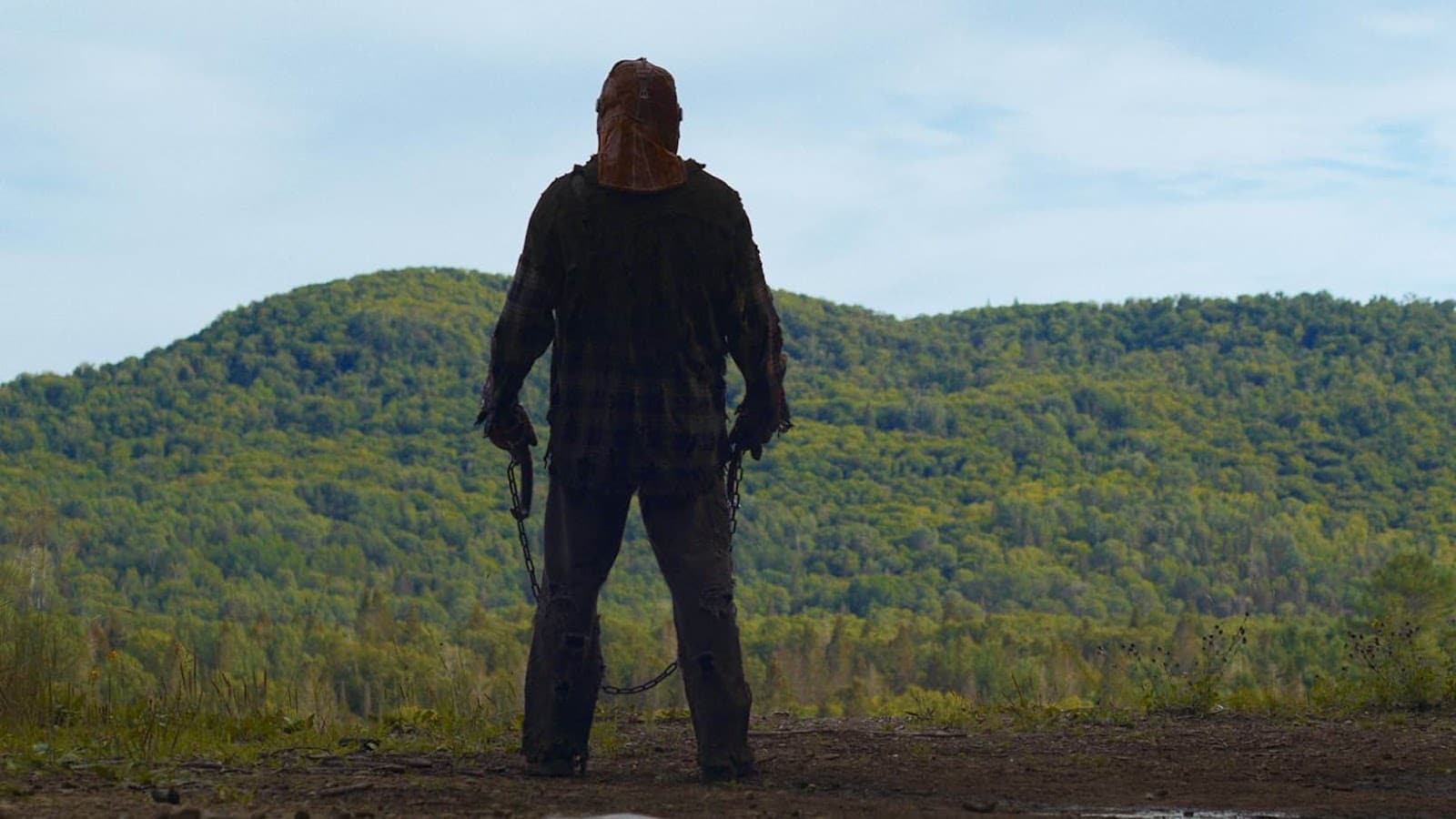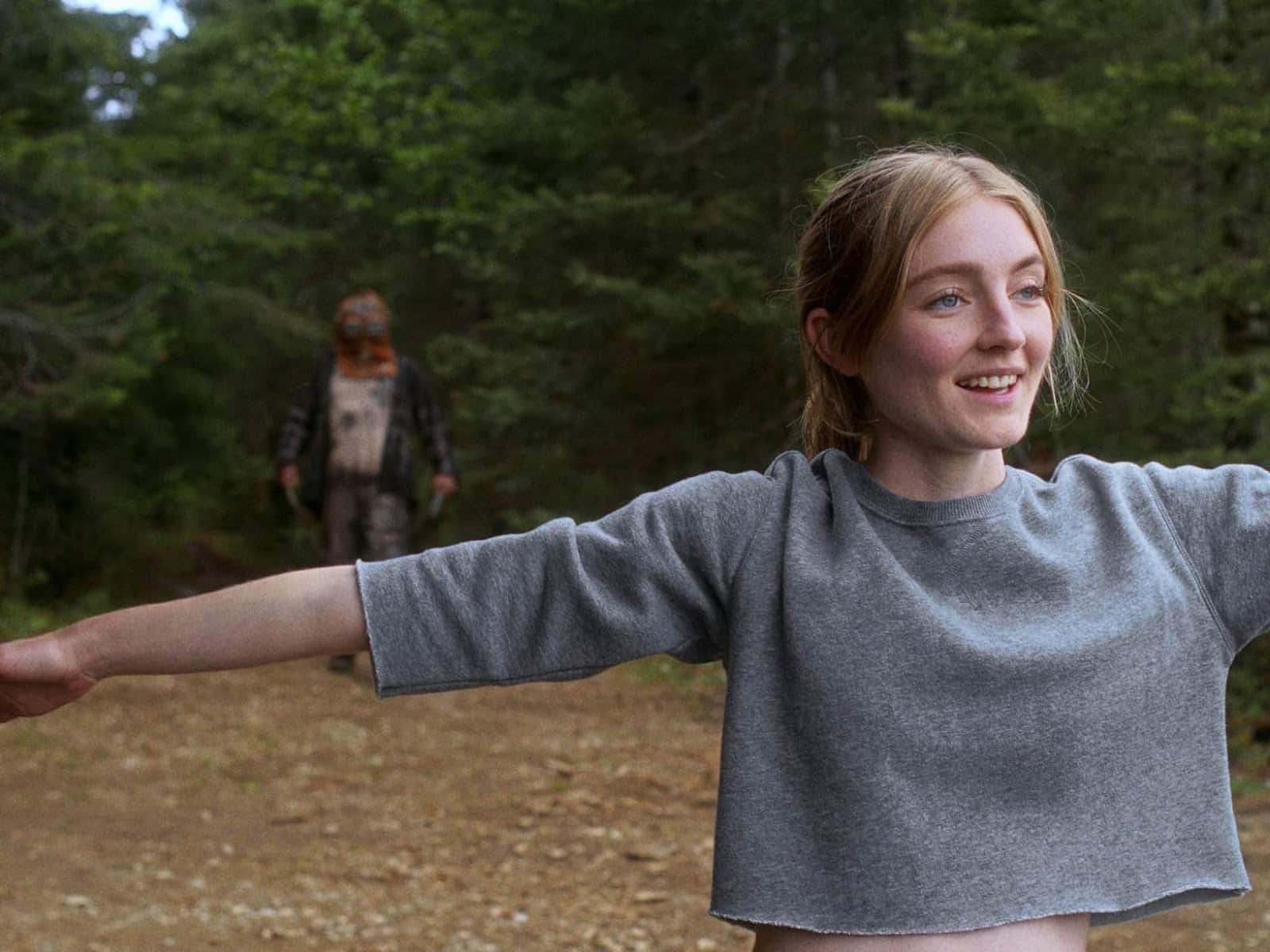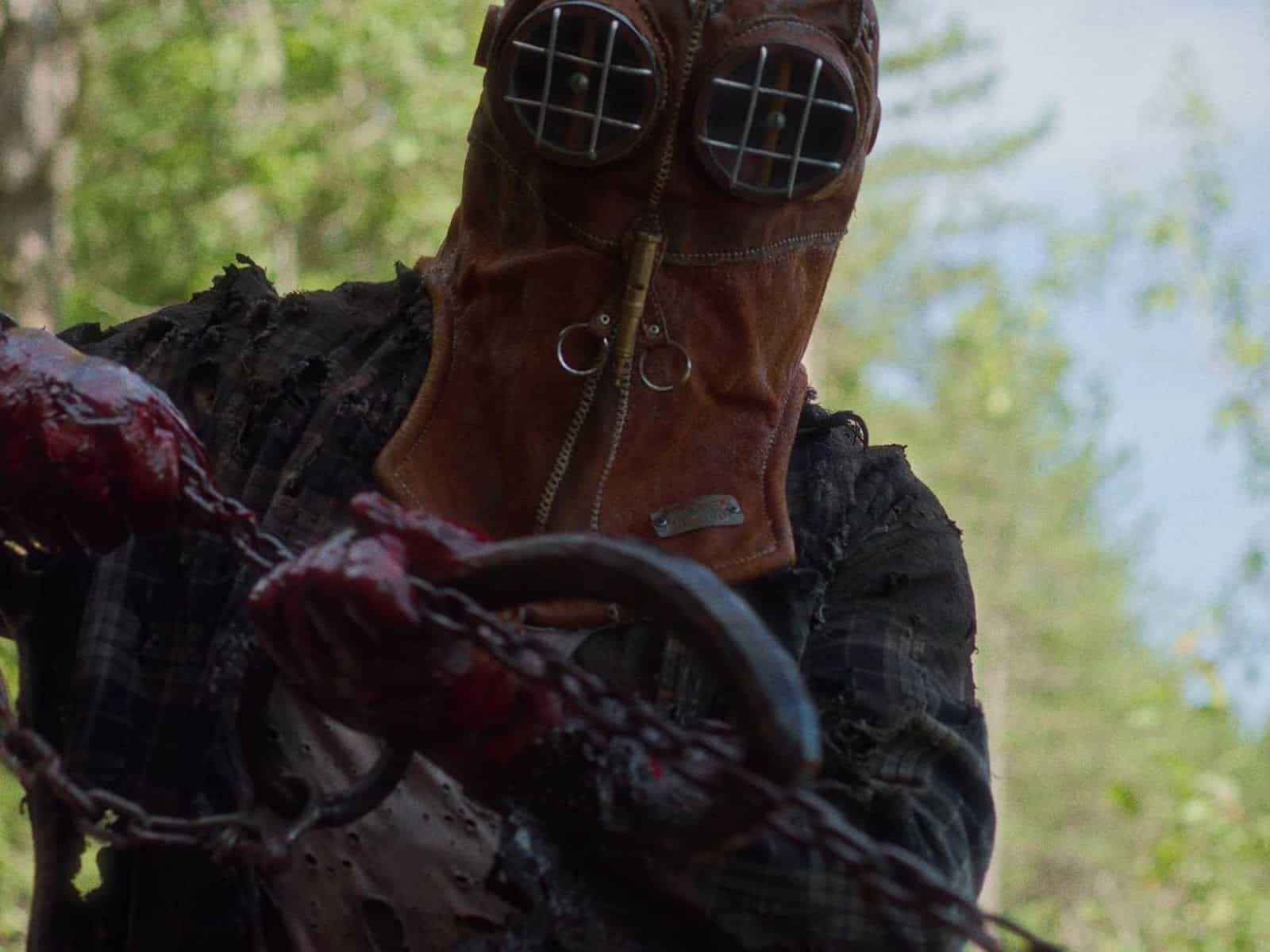

There is something you should know about me before leaving this review. I love ’70s Slashers. This is something that was made for me.
Chris Nash’s In a Violent Nature presents an audacious reimagining of the slasher film, daring to shift focus from the traditional teenage victims to the enigmatic killer himself, Johnny, a vengeful spirit haunting the remote woods of Northern Ontario. While the film achieves remarkable atmosphere and inventive brutality, its experimental approach often stumbles, leaving audiences divided between admiration for its artistry and frustration with its execution.
At first glance, the premise is familiar: a hulking, once-human bogeyman, brought back from the grave by careless teenagers, embarks on a bloody rampage. However, Nash refuses to follow the traditional slasher playbook. Instead of indulging in the usual blend of debauchery and campfire thrills, In a Violent Nature takes a slow, meditative approach, centering Johnny’s methodical movements through the dense wilderness rather than the frantic lives of his victims. This shift creates an atmospheric tension that is masterfully sustained through stellar cinematography and sound design. The film’s serene depiction of nature—punctuated by the eerie crackle of branches and Johnny’s ominous footsteps—imbues the story with an almost hypnotic quality, a pulse that mirrors the rhythm of the killer’s deadly pursuit.

Ry Barrett’s portrayal of Johnny is compelling in its silent ferocity. With no dialogue to rely on, Barrett imbues the character with a primal menace that is heightened by Nash’s deliberate pacing and dynamic camera work. As the killer methodically stalks his prey, the camera often hovers just behind his head, capturing his terrifying presence without granting the audience full access to his psyche. This creates a chilling detachment, forcing viewers to observe the gruesome acts from a distance—removing any chance of aligning with the victims. The kills themselves are grotesque spectacles, amplified by practical effects that showcase Nash’s love for the genre. Whether it’s a log-splitter used as an impromptu guillotine or bodies twisted in horrific ways, each death is a visceral testament to the filmmaker’s dedication to horror craftsmanship.
However, despite its impressive technical achievements, In a Violent Nature falters where it should excel: in its characters. While the film intentionally minimizes their importance, focusing on the killer and environment, the teenagers are so grating and unlikable that their inevitable deaths feel more like a relief than a cause for tension. Their dialogue is stilted and forced, making it difficult for the audience to invest in their survival. Instead of fearing for their lives, viewers are left impatiently waiting for Johnny to take them out, which undermines the dread Nash so skillfully builds elsewhere. The lackluster performances from the cast further exacerbate this problem. In a film that could have thrived on simplicity, the wooden acting feels like a missed opportunity to create a deeper emotional connection.
Nash’s experimental slasher also suffers from a weak narrative. While the story provides just enough context to explain Johnny’s murderous motivations—a stolen trinket from his grave—this plot thread remains underdeveloped, leaving many unanswered questions. The film leans heavily on mood and atmosphere, almost to a fault, as it forgoes meaningful plot development in favor of its stylistic ambitions. The result is a film that, while visually arresting and unique in its approach, often feels hollow at its core. It’s not enough to throw the film off center, but it is enough to make me wonder what this would be like with more developed ideas.

In a Violent Nature draws heavy inspiration from classic slasher films, particularly Friday the 13th, but also The Burning and that slew of 70s slashers, yet it also aims for something more introspective. Nash’s decision to focus on Johnny, to render him almost as an elemental force of nature, sets the film apart from typical genre entries. There’s an artistry in how the film deconstructs the slasher formula, inviting comparisons to more avant-garde horror films like A Ghost Story or La Région centrale. However, its ambition outstrips its execution, as the film’s slow pace and minimalistic plot leave it feeling more like a cinematic experiment than a fully realized horror experience.
In the end, In a Violent Nature is a film of contradictions: beautifully shot but marred by poor performances, richly atmospheric yet lacking emotional depth. It is a movie that horror aficionados will admire for its technical prowess and inventive kills, but it may leave others unsatisfied due to its uneven storytelling and shallow characters. For all its boldness, it never quite reaches the heights of true terror, but it remains an intriguing, if flawed, addition to the slasher genre.

There’s no doubt that Nash has the potential to push horror cinema in exciting new directions—In a Violent Nature proves that much. I, for one, am really excited for what comes next.
Stars 3.5/5




